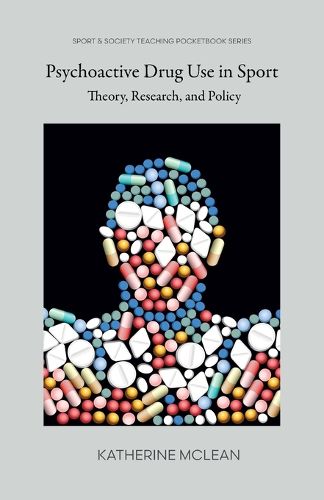Readings Newsletter
Become a Readings Member to make your shopping experience even easier.
Sign in or sign up for free!
You’re not far away from qualifying for FREE standard shipping within Australia
You’ve qualified for FREE standard shipping within Australia
The cart is loading…






This title is printed to order. This book may have been self-published. If so, we cannot guarantee the quality of the content. In the main most books will have gone through the editing process however some may not. We therefore suggest that you be aware of this before ordering this book. If in doubt check either the author or publisher’s details as we are unable to accept any returns unless they are faulty. Please contact us if you have any questions.
The spectacle of illicit drug use or doping among high-profile athletes has become a staple feature of news outlets worldwide. Beyond carrying implications for competition results, titles, and sport-specific records, such cases are read as compelling morality tales, and consumed as popular entertainment. In fact, there is little evidence that athletes' consumption of controlled substances has increased over time, or represents a new problem; yet perception has shaped substance use policies in both sport and society at large - making and breaking careers, fueling fears, and generating unanticipated consequences. This book presents a broad epidemiological portrait of psychoactive drug use among athletes, bolstered by a theoretical framework that highlights salient sociological features of sport and the social psychology of athletic teams and competition. Sport at all levels is explored as a "risk environment" for drug use, which serves to modulate not only the likelihood of psychoactive substance use, but the associated harms. Interventions, policy options, and sporting contexts that may reduce or minimize drug-related harms, or encourage controlled substance use, are considered throughout the text. In addition to sketching a global history of psychoactive drug use in sport, two drug-specific case studies are presented in detail: alcohol use and overuse among university and non-elite "club" athletes, and the non-medical consumption of opioids within contact sports. An interdisciplinary text, this book provides a comprehensive review of current research in psychoactive drug use in sport, as well as a guide to evidence-based interventions.
$9.00 standard shipping within Australia
FREE standard shipping within Australia for orders over $100.00
Express & International shipping calculated at checkout
This title is printed to order. This book may have been self-published. If so, we cannot guarantee the quality of the content. In the main most books will have gone through the editing process however some may not. We therefore suggest that you be aware of this before ordering this book. If in doubt check either the author or publisher’s details as we are unable to accept any returns unless they are faulty. Please contact us if you have any questions.
The spectacle of illicit drug use or doping among high-profile athletes has become a staple feature of news outlets worldwide. Beyond carrying implications for competition results, titles, and sport-specific records, such cases are read as compelling morality tales, and consumed as popular entertainment. In fact, there is little evidence that athletes' consumption of controlled substances has increased over time, or represents a new problem; yet perception has shaped substance use policies in both sport and society at large - making and breaking careers, fueling fears, and generating unanticipated consequences. This book presents a broad epidemiological portrait of psychoactive drug use among athletes, bolstered by a theoretical framework that highlights salient sociological features of sport and the social psychology of athletic teams and competition. Sport at all levels is explored as a "risk environment" for drug use, which serves to modulate not only the likelihood of psychoactive substance use, but the associated harms. Interventions, policy options, and sporting contexts that may reduce or minimize drug-related harms, or encourage controlled substance use, are considered throughout the text. In addition to sketching a global history of psychoactive drug use in sport, two drug-specific case studies are presented in detail: alcohol use and overuse among university and non-elite "club" athletes, and the non-medical consumption of opioids within contact sports. An interdisciplinary text, this book provides a comprehensive review of current research in psychoactive drug use in sport, as well as a guide to evidence-based interventions.